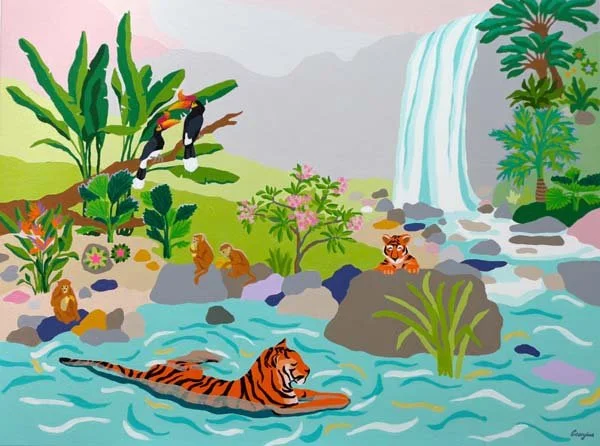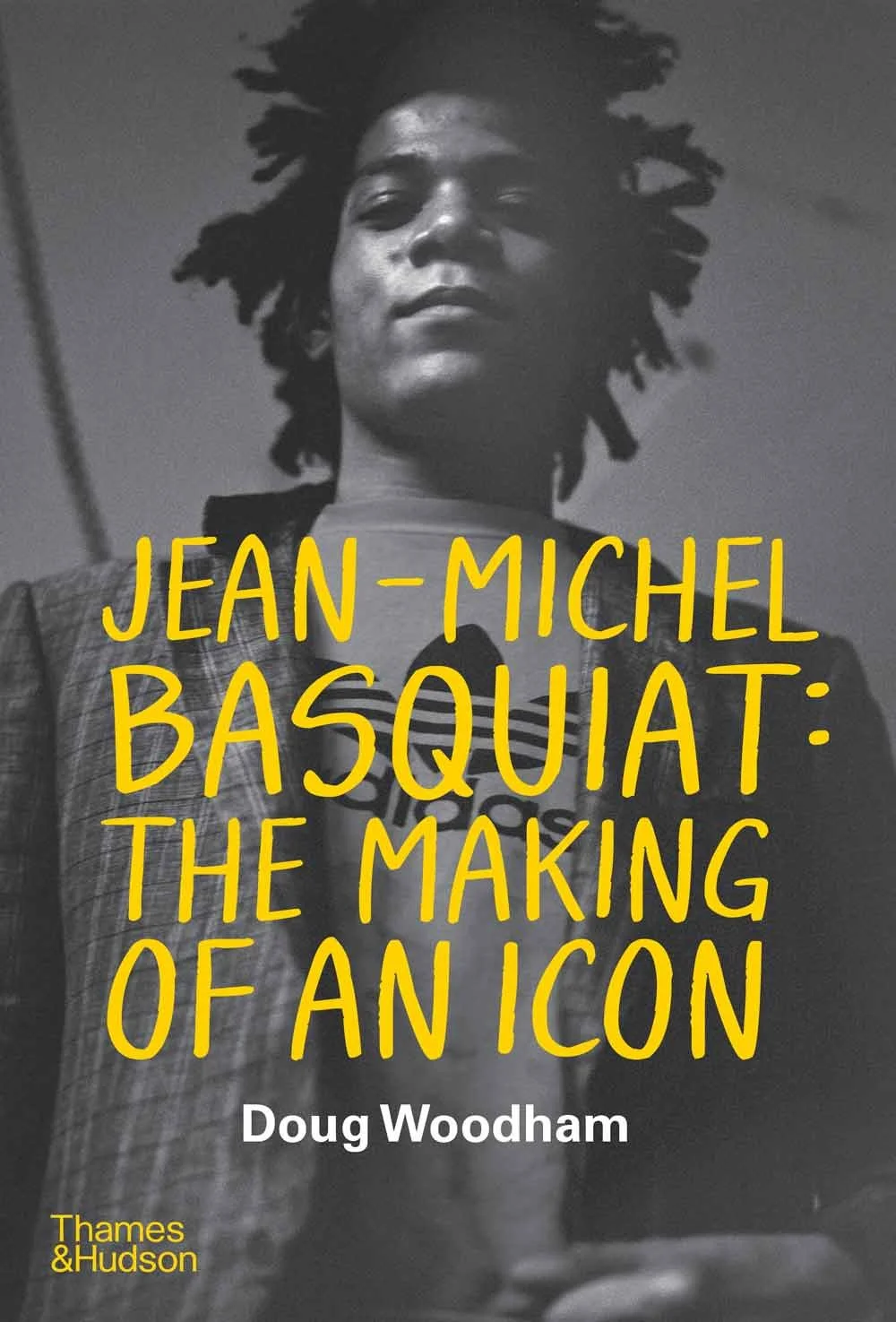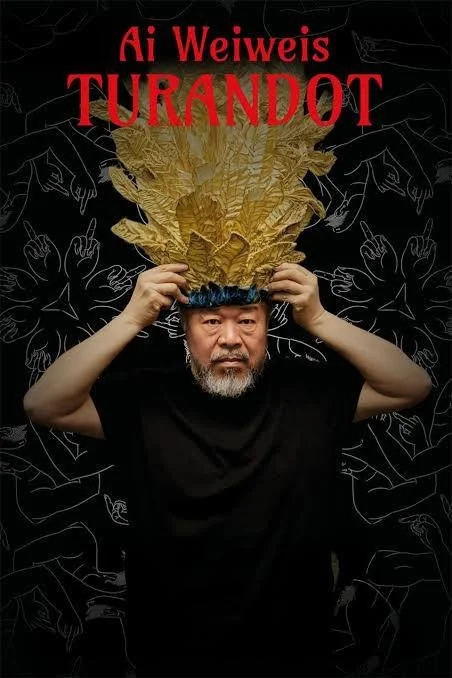Courtney Nicole Googe is an autobiographical artist based in Fort Worth, Texas, whose practice centers on reduction printmaking, alongside work in photography, installation, and video. She holds a BFA from the University of Wyoming and an MFA from the University of Dallas. Googe is currently an Assistant Professor of Art at Tarrant County College, where she teaches Printmaking, 2D Design, and Art Appreciation. Summers often find her in Crete, Greece, teaching or developing new work. She is the mother of two daughters pursuing the arts and shares her home with a mischievous cat named Goat Cheese Morningstar. @courtneynicolegooge
Where were you born and raised? How did it influence your art and your thinking about the world? I was born in Virginia and my dad was in the Navy so we moved all over during my childhood. There was always new schools, new teachers, new neighborhoods, new friends. I quickly learned everything was temporary and people are pretty much the same everywhere you go. It’s easier to connect with people by simply being authentically human.
The longest I spent anywhere was on the MIssissippi Gulf Coast, where iI grew up surrounded by jazz posters and the work of Walter Anderson, a painter and printmaker from the 1950s. That Southern folk art and music poster aesthetic took up permanent residence in my brain, and I knew I wanted to make art like that someday.
Was there a moment when you realised making art wasn’t just something you loved—but what you wanted to do with your life? For you, what is the importance of the arts? The one constant place of my childhood was my grandparents’ house in Missouri. My grandpa was an artist and my grandmother liked crafts, so I understood the value of handmade objects at a very young age. My grandpa would cut down all sorts of wooden shapes for me to paint and if I wanted to make something for my dolls or stuffed animals, he would always help. My grandma also collected books, she really loved pop-up books so I learned some basics of how to make simple ones as a child. Art always had value in my family and I knew very early that I would be an artist of some kind. Art cannot be separated from life. Art is embedded in simply the act of living.
What does your typical day in the studio look like? Walk us through your studio. What grounds you when you begin working in the studio?
Coffee. Always a fresh pot of coffee. Hot and black. Get that going.
Morning stretching and some resistance training.
Review what’s currently in progress and what is ready for the next step. Typically I’ll have around 3 or more prints in various stages. Some may be hanging to dry the final layer before scanning into the computer. Some may be ready for the next layer of ink. Some may be half carved.
Those that need their next layer of ink, I’ll print first. I’m lucky to have a huge window that overlooks my printshop area at home, so I really enjoy printing in my PJs (under the handmade apron that I’ve had since grad school) with the morning sun streaming in. I hand-print my reduction relief blocks. I use a ball-bearing baren that is my baby. Haha, it was a gift from my undergrad printmaking professor, the well-used one from the University of Wyoming printshop. I have used it since 2010. While I'm printing, sometimes I’ll listen to a podcast, such as this one or NewsPrint Pod. After cleaning up ink, I’ll carve a different block for a while. All the while trying to keep my white cat, Goat Cheese, from laying down on my glass top table!
What projects are you at work on at the moment? What are you currently making, and what ideas or tensions are guiding the work? Right now I am building a collection of small posters and zines, excited to use poetry and photography as a way to immediately respond to these ever changing times. The words and photos are integrated inot the final print.
I have residencies lined up over the next several months, including a return to Mudhouse Art in Crete, Greece and then Soon Art Studio in Vienna, Austria. Traveling and exploring the history and stories of these places always drive my work down new paths.
My life is always the main theme or idea- to create, live, and document my story (my mythology) in various ways. Experiences, emotions, dreams…
When someone encounters your work, what kind of emotional or intellectual response are you hoping to provoke? I want people to feel validated in their humanness; a connection, common ground, the inspiration and encouragement to go out and live. I only tell my story- which is why I call myself an autobiographical artist- rather than pigeon-holing myself into any specific disciple. I don't have the right to present anyone else’s life, but my own. However, in being vulnerable and genuine with my life experiences, perhaps that will comfort (or not) others who view my work.
Which artists, living or historical, would you like to meet? And oh my goodness, there are so many artists! Carolee Schneemann, Yoko Ono, Roy Lichtenstein, Ed Ruscha, Wayne Thiebald, Robert Mapplethorp, Henri Toulous Lautrec, Caldonia Curry, Laurie Simmons, Zehra Khan, any artisans of the Minoan culture…
Do you draw inspiration from music, art, or other disciplines? Everything can be an inspiration! History and mythology are both consistent inspirations for me. I love to travel and learn about new cultures, stories, and traditions. Another artist I used to work with would tell me I would get obsessed about certain objects and those would become major elements in my work for a while (such as mason jars, gumball machines, couches, chairs, coffee cups, desserts…)
A great thing about living in Fort Worth is…
Fort Worth, Texas has some awesome museums and a growing art scene. There's so much diversity and the best local businesses and restaurants. I can go see an Ed Ruscha anytime I want and walk across the street to study the Miro. Down the hall I’ll examine a Greek red-figure krater then go outside and sing “Happy Birthday” in the Richard Serra. That night I’ll visit 5 galleries with receptions and talk with local artists and fellow art professors. Dinner is authentic Iraqi cuisine and some local cider!
Can you tell us about a piece that pushed your limits? How did you stay with it when things fell apart? The most challenging project I developed for myself was during my time as artist-in-residence at Tarrant County College. This was before I started working there. I had returned to therapy a year earlier to work through some past abuse and trauma. This fed my work as I used my time in the studio to process a lot of what I was healing. But I didn’t want to dwell on all this, I wanted to overcome it and I wanted others to perhaps find solidarity and validation if they had similar shadows in their own past. I called the project “Have a Safe Space, or How to be Vulnerable and Unapologetic.” I reflected upon literal spaces where I had felt the most free to be myself as well as created spaces. The installation culminated in a collection of oil pastel drawings of actual locations (like a shared space in grade school, the studio in Crete, or backstage at the school where I was working), prints and photographs of my body (and how it has kept me safe,) and a large blanket fort with a video piece. Over the course of the exhibition, I had more than a few visitors open up to me about their own past and we found that connection and understanding in each other.
Tell us about important teachers and mentors who helped shape your creative path. I’ve had several professors that have certainly left their mark on me. I’ve stayed in touch with my printmaking professor from grad school- we had moments of clashing horribly, but we learned so much from each other and are now good friends. I’ve also had the pleaser and benefit of being around some incredible, brilliant women- my art history professors, actually. My mentor from the University of Dallas, Dr. Cathy Caesar, has since passed, but I hope I continue her legacy, her passion for teaching and learning. Another art historian, Dr. Estelle Voisin Fonteneau, she has become like a sister. We have the greatest, raw, and profound conversations and she’s always been such an encouragement. She has written about my work as well.
I’ll also add that while I’m known for teasing the painters (as a printmaker), there have been two really close painters in my life that have helped me become the artist I am today. They haven’t been afraid to ask the big questions with me, and they push me to keep growing..
Can you share a memory or reflection about the beauty and wonder of the natural world? Does being in nature inspire your art? I’ve had a few really memorable experiences in nature. For the most part, my work as an artist is quite internalized, emotional, and abstract conceptually. Nature speaks to me most through a dark night sky and an ever-changing moon. Through a strong breeze at dusk and the flap of a bat’s wings. Through a seemingly empty desert where I feel like the last human on Earth. Or through the strange silence of an ancient cave offering itself as a portal to another world or another time. Nature is an escape from the distractions of society, of the everyday, and it offers me time and space to dream of the profound, of the transcendent.
I also believe in trying to create safe studios, green studios. My grad professor was focused on getting rid of unhealthy chemicals and transitioning to green processes and products that were safer for students and the environment. I am doing the same in my own printshops, both at home and on campus.
AI is becoming more entwined with the way we see the world, creativity, art, our ideas of beauty and the way we communicate with each other and our imaginations. As an artist working with handmade materials and storytelling, what are your thoughts on its rise? AI is going to be an ever-evolving and necessary conversation in the arts. We will reflect on how new technologies have changed the creation of art throughout history. AI also provides us with the chance to discuss the human connection to art in a way we haven’t really needed to before. I’ve noticed an increase in philosophical discussions among artists and art students as a response to AI.
There’s also more of a return to traditional practices and “craft” disciplines and these are being recognized more than ever as fine art. To balance a surge of digital and AI art, DIY culture has become more popular; textiles, glass, metalsmithing, printmaking, and ceramics are being represented more frequently in galleries and museums.
Exploring ideas, art and the creative process connects me to…something bigger than all of us. Call it spirituality, call it the universe, the collective unconscious, the divine creator. To simplify, I’ll say “purpose.”














































































